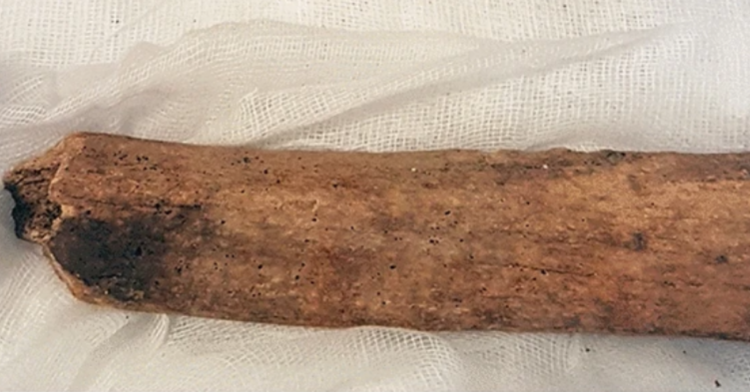If you’ve toured the particularly old and ornate churches of Europe, there’s a good chance that you’ve come across at least one that holds some preserved remains of an important figure within the history of Christianity, usually a saint.
For instance, if you were to visit Basilica San Domenico in Siena, Italy, you will be greeted by the head and thumb of Saint Catherine of Siena herself. And if you asked around at the Santi XII Apostoli church in Rome, you would likely be told with some confidence that you stood in a place that houses the bones of two of Jesus’ apostles.
However, such a claim has recently been made much more questionable since at least some of the remains interred there were found not to belong to anyone who would’ve met Jesus.
Even before a team of researchers led by Kaare Lund Rasmussen analyzed the bones themselves, something about Santi XII Apostoli didn’t quite add up for them.

As they wrote in an article published by the Heritage Science journal , an inscription in the vestibule states that the church sits on the same land as another founded by Emperor Constantine in dedication of all 12 apostles.
However, the research team noted that such dedications weren’t the basis for founding a church until the 10th century, hundreds of years after Constantine died.
But what they did find was that Santi XII Apostoli was originally founded to specifically honor the apostles James and Philip.
Interestingly enough — while Philip’s story is largely agreed upon — James’ whole relationship with Jesus seems to depend on who you ask.

As Rasmussen’s team outlined, James is generally considered Jesus’ brother by Joseph’s previous marriage within Patristic and Greek Orthodox traditions, while modern Protestants tend to believe that he was the son of Joseph and Mary.
Meanwhile, he’s not usually considered Jesus’ brother at all within Catholic traditions, but rather a cousin.
But regardless of who describes James the most accurately, a femur that has been attributed to him for centuries is considered one of the most important relics in the basilica.

The other relics of similar status there are the tibia and the foot believed to belong to St. Philip.
To determine their authenticity and their treatment throughout history, the research team conducted a thorough investigation of each of these pieces.

They exposed samples from each piece to X-rays, both to see how elements within them lit up and how the rays spread throughout the samples (a process called diffraction), as well as thermoluminescence dating, infrared and Raman spectroscopy, and other processes that revealed the chemical, molecular, and structural makeup of the bones.
It’s worth noting that only the sample from St. James’ femur was subjected to radiocarbon dating as it was better preserved than either of St. Philips’ remains.
Keep that aspect in mind because it explains why we’ll see the team make a conclusive statement about the authenticity of St. James’ femur, but not St. Philip’s foot or tibia.
This analysis revealed the levels of certain elements in each of the bodies in question, which gave researchers insight into conservation practices since the pieces were brought to the basilica and even the apostles’ diets.

For instance, St. Philip’s foot was found to have an unusual amount of strontium, which indicated an unusual diet that matched those of Qumran, an ancient Middle Eastern community in what is now called the West Bank.
They also uncovered beeswax and insecticide in the mummy-like wrap St. Philip’s remains were preserved in, indicating a conservation effort that occurred in 1956 at the earliest.
But what the research team discovered about St. James’ femur was far more explosive thanks to their ability to carbon date its materials.

Namely, that there’s no possible way this femur actually belonged to St. James at all.
That’s because it dated back to between 214 and 340 AD, which means it belonged to someone who died centuries later than could be possible for someone who actually knew Jesus before his crucifixion. A similar time frame was determined from the oil extracted from his own mummy-like wrappings and while its potential year of origin is much wider, the earliest cutoff point is 267 AD.
As you may have noticed, the authenticity of St. Philip’s foot and tibia still remains up in the air but this revelation about “St. James’ femur” doesn’t inspire a lot of optimism that this is the real thing either.
h/t: Heritage Science

















































